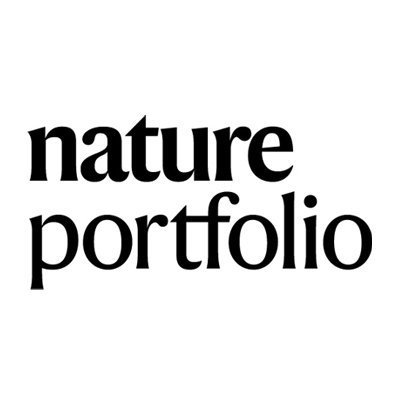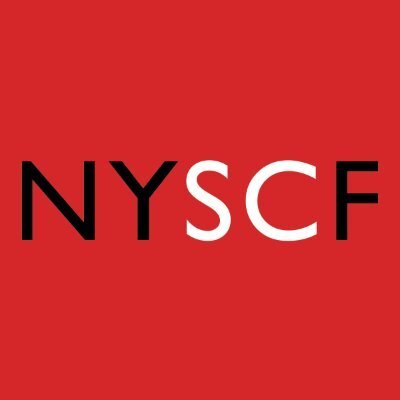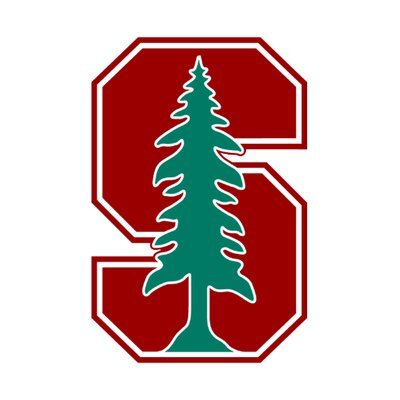IN THE NEWS
Read, watch, or listen to recent news and publications by the Liddelow lab and our collaborators.
MARCH 2025:
Lauren Schenkman from The Transmitter writes about Philip Hasel’s new work on Glia Limitans Superficialis astrocytes - Unexpected astrocyte gene flips image of brain’s ‘stalwart sentinels’.
JANUARY 2025:
NYU Langone is part of up to $56 Million award project to make vision-restoring whole-eye transplants a reality. Read about our exciting collaborative work with Stanford, and Pittsburgh, funded by ARPA-H/THEA.
JANUARY 2025:
Behind the Breakthrough. Shane explains how the lab’s scientific discoveries could change the way we treat neurodegenerative diseases.
DECEMBER 2024:
Cover image (by the fantastic Tyas Widayati) highlighting our three reviews out in Nature Neuroscience. Read them here, here, and here (!), and check out the fantastic editorial by Elisa Floriddia here. A MUST READ selection for everyone working with, or thinking of working with sc/snRNAseq methods.
NOVEMBER 2024:
First-timers at a huge meeting. Vivian Marx from Nature Methods discusses attending SfN for the first time with Kerry Limberg.
OCTOBER 2024:
Once dismissed, these cells in the brain have the spotlight in the neuroscience world. Jon Hamilton from NPRs reports on Priya Prakash’s work on X-Linked Dystonia Parkinsonism, and the role of neuroinflammation in disease.
JULY 2024:
Paul Frazel’s paper in Nature Neuroscience (see here) listed in the Nature Portfolio Innovations in Stem Cell Biology 2024 as a key paper in genomics in stem cells and development.
APRIL 2024:
Sequencing Spatially-Located Single Cells. Mike May (Inside Precision Medicine) discusses some of our recent efforts using spatial transcriptomics to uncover novel astrocyte populations.
MARCH 2024:
Shane receives the Pershing Square Foundation “MIND” Prize along with 6 other creative researchers. Paving the way to a deeper and transformative understanding of the brain.
DECEMBER 2023:
How the ‘Stars of the Brain’ Could Protect Us From Neurodegeneration - highlight on two recent papers from Priya Prakash (in Glia) and Paul Frazel (in Nature Neuroscience).
NOVEMBER 2023:
NYU reports: NYU Researchers Among the World’s Most Cited. Our work is among the top 1% of cited works in the world for the fourth year in a row. Bravo to the whole team. See the full Clarivate list here.
NOVEMBER 2023:
Border Surprise: Glia Limitans Astrocytes Sit on Brain Surface. Madolyn Bowman Rogers of AlzForum highlights Philip Hasel’s recent preprint on astrocytes forming the surface of the brain.
JULY 2023:
The mystery of the human genome's dark matter. Some highlights of Priya Prakash’s work with our collaborator Jef Boeke and the whole team involved with the DarkMatterProject.
MAY 2023:
Learn about graduate student Paul Frazel’s partnership with NYC community lab GenSpace: Fluent BioSciences partners with Genspace to unleash the power of PIPseq™: empowering community scientists to transform genomic research
MARCH 2023:
Uriel Rufen-Blanchette wins a prestigious National Science Foundation Graduate Research Fellowship.
JANUARY 2023:
HHMI’s Emerging Pathogens Initiative aims for scientific head start on future epidemics. Excited to get to work with Michelle Monje, Akika Iwasaki, Beth Stevens, Karl Diesseroth, Erin Gibson, Catherine Blish, and Ukpong Eyo on Pathogenic brain states: cells and circuits involved in altered brain function after non-central nervous system infection.
NOVEMBER 2022:
Research findings may offer a new potential therapeutic target for Alzheimer’s disease - press on postdoc Philip Hasel’s latest work in Alzheimer’s and Dementia. A collaboration with the Ehrlich Lab at Mt Sinai School of Medicine.
NOVEMBER 2022:
23 NYU professors named among world’s most cited researchers. Grace Homan from Washington Square News writes about our recent accolades and support at NYU.
NOVEMBER 2022:
Cornucopia: LOADs of New Mouse Models Available. Madolyn Rogers writes about all the exciting new mouse models produced by MODEL-AD. We’ve been lucky enough to contribute a small amount to this exciting endeavor.
NOVEMBER 2022:
Gene Mutation May Explain Brain Cell Plaque Buildup in Alzheimer’s Disease. A brief article on Philip Hasel’s exciting new spatial transcriptomic analysis of mouse models of AD. Read the full paper here.
SEPTEMBER 2022:
One of Long COVID’s Worst Symptoms Is Also Its Most Misunderstood. Ed Yong writes in The Atlantic about our collaboration with Michelle Monje from Stanford.
AUGUST 2022:
High-Res Spatial Transcriptomics Offers New Views of Mouse Brain - a comprehensive piece by Chelsea Weidman Burke from AlzForum. Covering work from the lab driven by Philip Hasel, Jessica Sadick, and Michael O’Dea.
AUGUST 2022:
“Solving Neurodegeneration” White Paper Publication Results from Innovative Research Collaboration. Our collaborative white paper summarizes common elements in neurodegeneration. Covered by News Wise.
AUGUST 2022:
William A. Haseltine writes a two-part piece on COVID-fog for Forbes: Even Mild Covid-19 May Cause Lasting Brain Fog.
JULY 2022:
Priya Prakash is awarded a Leon Levy Fellowship in Neuroscience to study how glial cells in the brain contribute to neurodegeneration.
JULY 2022:
Physician’s FOCUS: NEUROLOGY & NEUROSURGERY. Unraveling Glial Contributions to Alzheimer’s Disease. A brief overview of clinical applications of recent work from Michael O’Dea and Jessica Sadick published in Neuron.
JULY 2022:
The Secrets of Covid ‘Brain Fog’ Are Starting to Lift. Maggie Chen @ WIRED writes about our recent collaboration on microglia responses to SARS-CoV-2. (spoken edition of article also available through the link).
JUNE 2022:
Scientists discover long COVID may cause cognitive issues due to nerve damage in the brain. And article by Miles Breen / Palo Alto Weekly on our collaboration with Michelle Monje at Stanford University.
JUNE 2022:
Neha Mathur from News Medical writes about our recent SARS-CoV-2 work with Michelle Monje from Stanford University. Even mild respiratory COVID can affect the brain.
JUNE 2022:
Brain fog after COVID-19 has similarities to ‘chemo brain,’ Stanford-led study finds. A piece by Erin Digitale for Stanford Med News covers our recent work with Michelle Monje on mild COVID.
APRIL 2022:
Alzheimer’s-Linked Protein May Help Melanoma Spread to Brain. NCI staff write about our exciting collaboration with Eva Hernando-Monge’s lab at NYU. Investigating melanoma metastases in the brain and amyloid interactions with astrocytes.
APRIL 2022:
Cancer Tied to Reduced Risk of Alzheimer’s Disease. Our amazing collaborator Eva Hernando Monge discusses the implications of our recent collaborative work published in Cancer Discovery (PMID: 35262173).
MARCH 2022:
Skin Cancer Cells, as They Spread to the Brain, Use an Alzheimer’s Disease Protein to Sabotage Immune Defenses. Cancer, amyloid, astrocytes - exciting results headed by Kevin Kleffman in Eva Hernando-Monge’s lab.
NOVEMBER 2021:
The Society for Neuroscience awards Shane the Janett Rosenberg Trubatch Career Development Award at the Promotion of Women in Neuroscience Awards at the SfN 2021 meeting.
NOVEMBER 2021:
More Than 20 NYU Faculty Named to List of Highly Cited Researchers. Work from the lab among the top 1% of cited research for 2021. Search the full Clarivate Analytics’ Highly Cited Researchers list here.
NOVEMBER 2021:
Ask the Experts: glia characterization. A brief discussion about glia in health and disease by Shane, Nicola Allen, Ukpong Eyo, and Susana Alcantara.
OCTOBER 2021:
From angel to demon: Why some brain cells go ‘bad’. Bruce Goldman from Stanford Medicine covers our work from 2017 (Neurotoxic reactive astrocytes are induced by activated microglia) to our latest findings in 2021 (Neurotoxic reactive astrocytes induce cell death via saturated lipids).
OCTOBER 2021:
ELOVL Hurts—Enzyme Makes Lipids That Turn Astrocytes Toxic. A great piece by Tom Fagan from AlzForum that brings together expert opinions to discuss our toxic lipid publication.
OCTOBER 2021:
Toxic fatty acids to blame for brain cell death after initial injury. Shira Polan writes for NYU Grossman School of Medicine on our recent paper in Nature.
OCTOBER 2021:
John Ely from the Daily Mail writes about our recent publication: Hope for millions of patients with dementia and Parkinson's as scientists find likely culprit behind nearly all neurological diseases.
OCTOBER 2021:
NYU Physician Focus - NEUROLOGY & NEUROSURGERY | Why Do Brain Cells Die in Neurodegenerative Diseases?
OCTOBER 2021:
Kirti Pandey from Times Now News India comments on our recent discovery of neurotoxic lipids - Cure for dementia and Parkinson's in sight? Scientists find cells that cause neurological diseases.
SEPTEMBER 2021:
Study identifies reactive neuroinflammatory astrocyte subtypes in the mouse brain. Ingrid Fadelli , Medical Xpress described key findings of our reactive astrocyte heterogeneity paper in Nature Neuroscience.
SEPTEMBER 2021:
A Lab of Young Brainiacs Widens the Horizons in the Fight Against Neurological Diseases. Laura Tabellini Pierre from Nanostring writes about Philip Hasel’s latest paper published in Nature Neuroscience - Neuroinflammatory astrocyte subtypes in the mouse brain.
ON DEMAND LECTURE (2020):
The Role of Astrocytes in Neurodegenerative Disease. Watch this on-demand video presented by 10x Genomics (registration required).
NOVEMBER 2020:
Twenty-Six NYU Professors Among World’s Most-Cited Researchers. Work from the lab among the top 1% of cited research for 2020. See the full Highly Cited Researchers list from Clarivate Analytics here.
SEPTEMBER 2020:
To Treat Frontotemporal Dementia, Treat The Brain’s Immune Cells. A writeup on our collaboration with Eric Huang from UCSF.
AUGUST 2020:
Cover image by our collaborators at New York Stem Cell Foundation for our work on iPSC-derived human reactive astrocytes. Read the paper here.
JULY 2020:
‘Discovering the Critical Role of Astrocytes in Neurodegenerative Diseases’. An interview between Emily Henderson and Shane on our recent work in glaucoma and ALS that was lead by Kevin Guttenplan.
JULY 2020:
Conversation with Experts: How Can Brain Inflammation Lead to Neurodegeneration? Shane, Valetina Fossati (NYSCF), and Peter Calabresi (John’s Hopkins) discuss the role of inflammation in neurodegenerative disease.
JUNE 2020:
Star-Shaped Brain Cells May Play a Critical Role in Glaucoma. Brain injuries may cause astrocytes to kill the very nerves they normally nourish. Thanks to Shira Polan for covering our recent publication.
JUNE 2020:
’Astrocytes may play a key role in neurodegenerative disorders’ a short piece on AZO Life Sciences about our recent paper in Cell Reports.
JUNE 2020:
Glaucoma Nerve Cell Death May Be Driven by Toxin-Releasing Reactive Astrocytes - a brief article in Genetic Engineering & Biotechnology News on our recent study on glaucoma.
JUNE 2020:
Astrocytes Found Responsible for Nerve Cell Death in Glaucoma - Carla Simmons from The Science Times writes about our recent study on reactive astrocytes in glaucoma.
JUNE 2020:
WEBINAR: Shane and Michael Heneka (German Center for Neurodegenerative Disease) present Linking Neuroinflammation and Neurodegeneration for the Scientist.
JUNE 2020:
New Astrocyte Marker Allows Purification from Mixed Cultures. Madolyn Rogers from AlzForum writes on our recent collaboration with Valentina Fossat at NYSCF.
JUNE 2020:
Ability to ‘Create’ Astrocytes Supports Their Damaging Role in MS, Like Diseases. Patricia Inacio from Multiple Sclerosis News Today writes about our recent work.
JUNE 2020:
“When astrocytes attack” - the New York Stem Cell Foundation (NYSCF) writes about our collaboration with Valentina Fossati - out now in Neuron. Watch a short video about this research here.
FEBRUARY 2020:
New York based early career researcher wins UK dementia prize. Shane receives the David Hague Early Career Investigator of the Year Award from Alzheimer’s Research UK.
SEPTEMBER 2019:
Editors choice in Science Translational Medicine: Mitochondria fragments fuel the fire of neuroinflammation, by Gilbert Gallardo.
SEPTEMBER 2019:
“1 method may prevent brain cell death in several diseases” Bruce Goldman from Stanford University writes about a collaboration with Daria Mochly-Rosen’s group at Stanford - an extension of our original A1 work published in Nature.
JULY 2019:
A short podcast where Shane discusses astrocytes and Alzheimer’s disease—a topic he also spoke about at the Alzheimer's Association International Conference 2019.
JULY 2019:
Shane win’s the Inge Grundke-Iqbal Award for Alzheimer’s Research - awarded for most impactful study published in Alzheimer’s research during the preceding two calendar years. Read the press release here.
JANUARY 2019:
“Clearing the Fog surrounding Chemobrain” David Gutman from WashU St Louis writes a fantastic summary of our collaboration with Michelle Monje at Stanford University. Learn more about ChemoBrain here.
DECEMBER 2018:
How does chemo brain work? One cancer drug might interfere with brain signaling. A brief highlight about our work in collaboration with Erin Gibson and Michelle Monje at Stanford in Science by Jennifer Couzin-Frankel.
DECEMBER 2018:
Scientists discover a probable cause of 'chemo brain' and it may be treatable writes Victoria Forster in Forbes.
DECEMBER 2018:
Maria Cohut and Jasmin Collier from Medical News Today - Is it possible to reverse 'chemo brain?'.
DECEMBER 2018:
‘Chemo brain’ caused by malfunction in three types of brain cells writes Erin Digitale for the Stanford Medicine News Center. See also her piece for SCOPE - New hope for treating “chemo brain,” with a side of the joy of science.
DECEMBER 2018:
'Chemo brain' may result from effects on 'helper cells.' The finding could lead to possible treatments. Rachel Rettner, senior writer at LiveScience explains the key concepts of glial cell interactions following chemotherapy.
NOVEMBER 2018:
Esther Landhuis writes an exciting piece about astrocytes in this Technology Feature in Nature - Tapping into the brain’s star power. Graduate Student Rachel Kim’s stunning immunopanned astrocyte is highlighted at the start of the article!
SEPTEMBER 2018:
Neuroimmunology Experts Survey written by Benjamin Stecher - a patient advocate and force behind the Tomorrow Edition.
JULY 2018:
Is a cure for Parkinson's on the horizon? Experimental drug STOPS its progress and can combat its symptoms, promising trials show. Stephen Matthews for Mail Online.
JULY 2018:
Drug that stops progression of Parkinson's disease heads for human trials: read about how astrocytes may be a drug target to treat Parkinson’s disease. By Richard Haridy from New Atlas.
JULY 2018:
Experimental drug stops Parkinson’s Disease progression in mice: A great press release on our recent work with the Dawson Lab from Johns Hopkins.
JULY 2018:
Compound similar to diabetic medications slows parkinson’s progression in mouse study: Jose Marques Lopes writes about our collaboration with the Dawson Lab from Johns Hopkins in Parkinson’s News Today.
JUNE 2018:
Does Taming Killer Astrocytes Spare Neurons in Parkinson’s Disease? - Pat McCaffrey from AlzForum writes writes about our aging astrocytes collaboration with the Dawson lab at Johns Hopkins University.
APRIL 2018:
Rachel Kim wins a prestigious National Science Foundation Graduate Research Fellowship.
APRIL 2018:
Interview With Astrocyte Expert Prof. Shane Liddelow - Benjamin Stecher from the Tomorrow Edition and I had a chat about astrocytes. Check out his website for more great interviews about Parkinson's disease and associated disorders.
FEBRUARY 2018:
Aged Astrocytes Prime Brain for Neuroinflammation - Madolyn Rogers from AlzForum writes writes about our aging astrocytes collaboration with Laura Clarke at Stanford.
FEBRUARY 2018:
Star-shaped brain cells called astrocytes implicated in brain’s aging process, Stanford study shows. Bruce Goldman writes about our new collaboration with Laura Clarke at Stanford.
OCTOBER 2017:
STATNews names Shane Liddelow as one of 26 'Wunderkinds' for 2017.
SEPTEMBER 2017:
Is this the Alzheimer's gene? A nice piece on the DailyMail online about our collaboration with David Holtzman at Washington University in St Louis.
SEPTEMBER 2017:
ApoE4 Makes All Things Tau Worse, From Beginning to End - AlzForum.
JULY 2017:
An Ancient Cure for Alzheimer’s? Pagan Kennedy wrote an op-ed that included some of our work in the New York Times.
JUNE 2017:
Cover image for Immunity special edition on the Neuro-Immune Axis.
MAY 2017:
For the non-scientists, how about something a little more accessible? Try this Science Breaker piece - Toxic brain cells are a new target for treating neurodegeneration.
FEBRUARY 2017:
Michelle Pflumm writes "Microglia May Turn Astrocytes to the Dark Side in ALS" on the ALS Research Forum - an overview of our 2017 Nature paper.
JANUARY 2017:
Astrocytes as ‘Villainous Characters’. Carolyn Gregoire wrote about our work in the Huffington Post.
JANUARY 2017:
Toxic brain cells may drive many neurodegenerative disorders. Bruce Goldman wrote a wonderful piece for the Stanford University News Center on our reactive astrocyte paper.
JANUARY 2017:
Magdalena Kegel - "Astrocytes Can Turn Aggressive and Kill Neurons, Potentially Groundbreaking Study Says" in Multiple Sclerosis News Today.
JANUARY 2017:
JANUARY 2017:
Brain's “Helper” Cells Turn Toxic in Injury and Disease. Moheb Costandi wrote about our work in Scientific American.
JANUARY 2017:
Aberrant Astrocytes May Lead to Parkinson’s, Other Neurodegerative Diseases - Joana Fernandes from Parkinson's News Today.



























































































